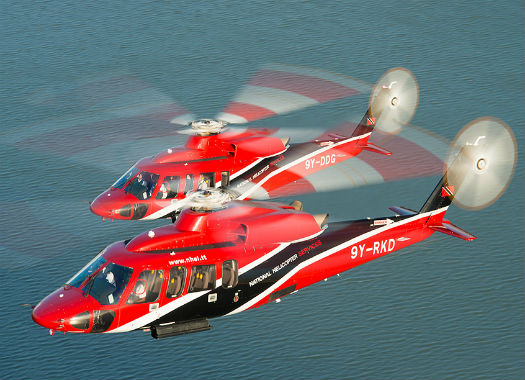
A slowdown in the offshore oil-and-gas market is one of the headwinds currently being faced by Sikorsky, and a contributing factor to UTC’s decision to sell the helicopter manufacturer. UTC president and CEO Gregory Hayes insists, however, that “Sikorsky has a great, great future.” Dan Megna Photo
Three months after announcing that it was exploring “strategic alternatives” for its Sikorsky Aircraft business, United Technologies Corp. (UTC) has confirmed that it will proceed with a sale or spinoff of the helicopter manufacturer.
UTC revealed on June 15 that it will pursue the separation of Sikorsky from UTC, subject to final board approval. “Hopefully [we’ll] have the process complete by the end of the year, be it a spin or a sale,” said UTC president and CEO Gregory Hayes, speaking at the company’s annual investor and analyst meeting at the 2015 Paris Air Show. “We’ll have the decision on spin versus sale done I think in about 60 days, probably by the end of July.”
Analysts have previously seen a spinoff of Sikorsky as more likely than a sale, because of the tax burden associated with the latter. Hayes indicated, however, that prospective bidders for Sikorsky appear to recognize the helicopter manufacturer’s long-term value — which could make a sale worthwhile for UTC.
“We’ve talked all along about the fact that as we look at this value proposition around Sikorsky, that if we decide to sell the business, we have to find a way to create value that would be equal to what we would see in a spin, or greater,” he said. “So, as we’ve talked to potential buyers of Sikorsky we’ve made that very clear, and I think so far we’ve been encouraged in terms of the opportunities that the buyers have out there.”
Hayes did not identify those potential buyers, but Airbus, Boeing, Lockheed Martin, and Textron are seen as likely prospects. Any such sale would need to clear regulatory and anti-trust hurdles, in addition to satisfying UTC’s board.
UTC, which also counts Pratt & Whitney and UTC Aerospace Systems among its businesses, has said that removing Sikorsky from its portfolio “will better position UTC to focus on providing high-technology systems and services to the aerospace and building industries.”
It will also immediately boost value for UTC shareholders by resulting in higher organic growth, improved operating margin, better cash flow generation, and lower defense exposure, according to UTC senior vice president and CFO Akhil Johri. “If you look at several of the financial metrics, they all get better for UTC ex-Sikorsky,” Johri said at the Paris investor meeting.
Sikorsky has been challenged by steep cuts in U.S. defense spending, and, more recently, by a slowdown in the offshore oil and gas market, which accounts for around 80 percent of its commercial helicopter deliveries. In Paris, Sikorsky president Bob Leduc noted that oil and gas exploration investment continues to decline, and cited an offshore rig utilization rate of just 59 percent in May 2015, down from 76 percent in March.
“What that means for us is: no new platforms, no new demand for helicopters. Less drilling going on in the existing platforms, lower flight hours,” Leduc said. “So we’ve seen about a 10 percent decline in flight hours, we’ve seen an additional five percent decline in our aftermarket revenues because of our oil operators basically pulling down their shelf stock in a time of tight capital spend.”
Leduc projected that overall oil and gas civil helicopter deliveries will be down 35 percent this year — from 122 to around 80 — and that the decline in Sikorsky’s deliveries will be commensurate. That’s one reason why, on June 2, Sikorsky announced a major restructuring that will result in approximately 1,400 job cuts at its facilities in Connecticut, Pennsylvania, and Poland.
In addition to the layoffs, Sikorsky will reduce its manufacturing footprint by around one million square feet. “It’s not just to address this near-term issue, it’s to address our costs prospectively, so that we can stay affordable for our U.S. government customer, and so that we can defend our commercial market where we’re seeing increased competition,” Leduc said, predicting “pricing pressure” as new helicopter models from Bell and Airbus enter the market in coming years.
Despite these near-term headwinds, UTC is adamant that Sikorsky’s long-term prospects are positive, thanks in part to a $49 billion backlog — largely driven by U.S. government contracts including presidential and combat rescue helicopter programs — that will lead to over $10 billion in revenue by 2025. Sikorsky is also at the forefront of technological advances in speed and autonomy that promise incremental revenue opportunity.
“Truly Sikorsky has a great, great future,” said Hayes. “The decision was made simply because we think it’s the best thing to do for Sikorsky and its customers and its employees, to make Sikorsky a separate company . . . I think whether we sell it or whether we spin it, the future will be bright for Sikorsky.”









